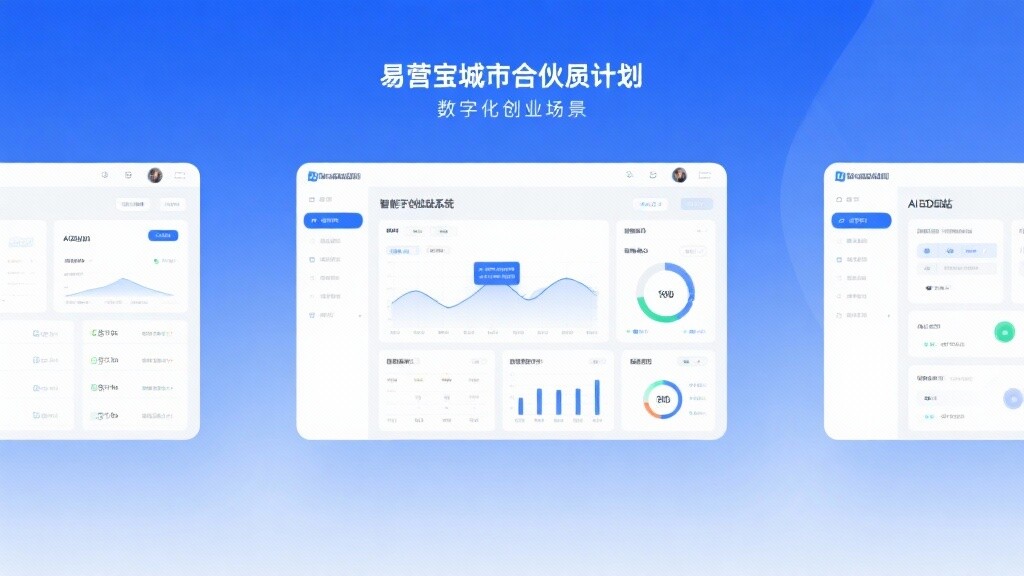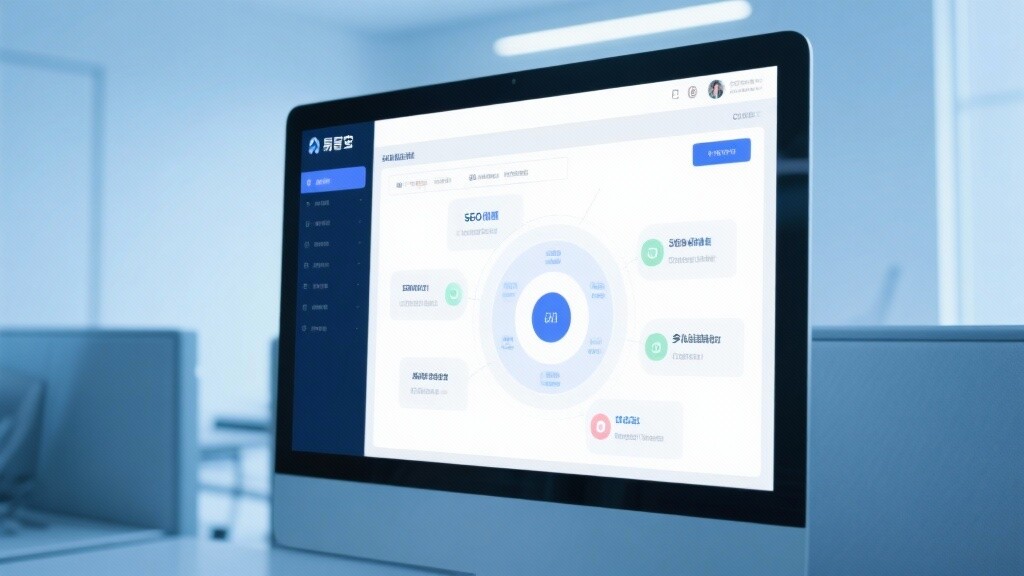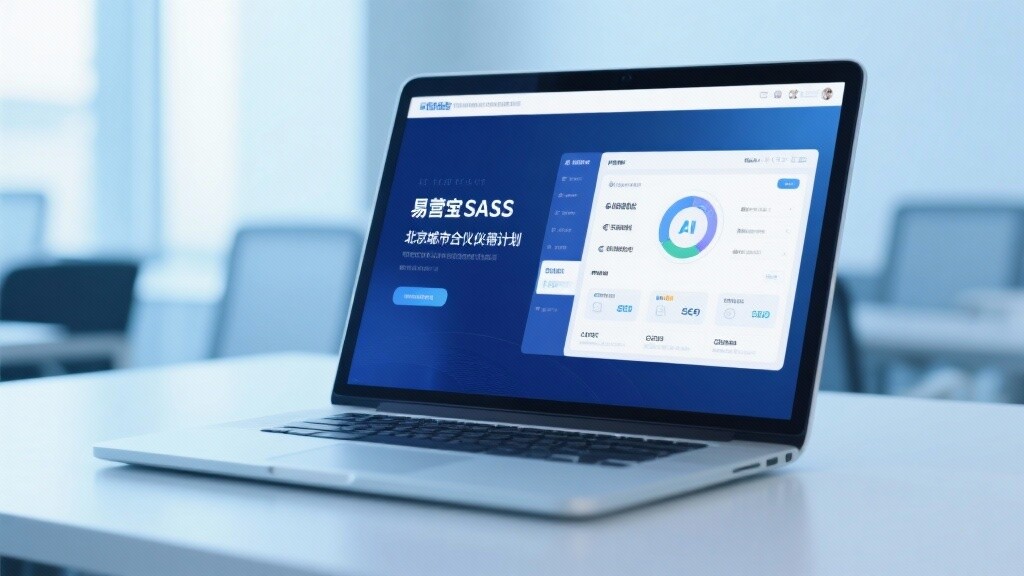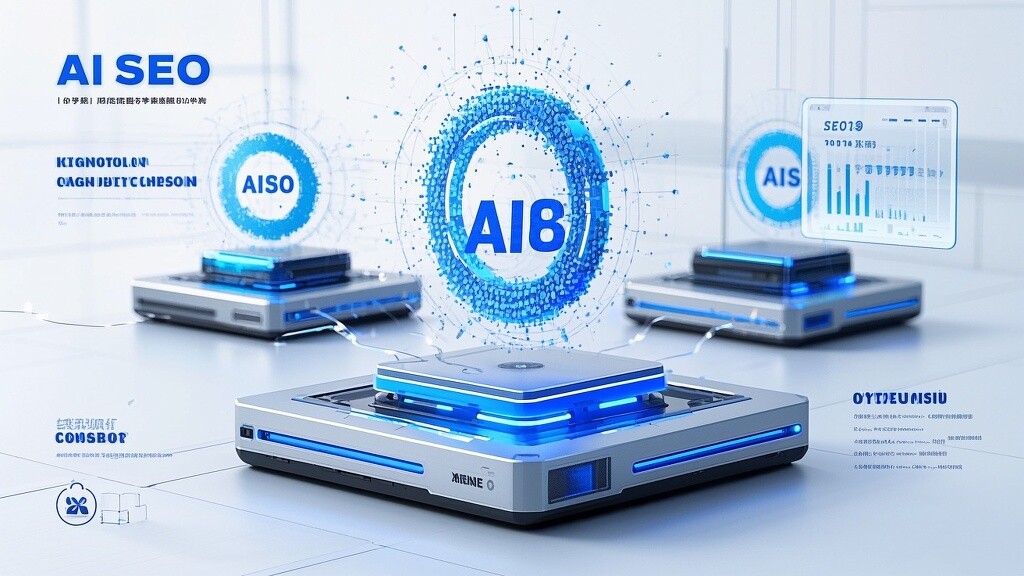EasyProfit Cloud Intelligent Website Marketing System Platform!
1. The authoritative definition and core value of SEO System
1. The definitive definition of SEO System
An SEO system is an integrated, automated, data-driven software platform or methodology framework. By integrating technical audits, data analysis, content planning, keyword research, and performance monitoring , it helps businesses systematically manage and execute complex SEO strategies at scale. Its core focus is to standardize, automate, and intelligently manage SEO processes , ensuring websites consistently comply with search engine best practices and the latest algorithm requirements .
2. The strategic core value of the SEO system
2. The Development History of SEO Systems: From Manual Tools to Automated Intelligent Platforms
The development history of the SEO system is the essential evolution history of the SEO industry from "experience-based operation" to "scientific management".
1. Early stage: scattered tools and manual operation (1990s-2005)
Technical Features: SEO mainly relies on single tools such as webmaster tools and keyword density checker .
Core solution: Manual keyword research and title/meta optimization . Lack of integration and automation.
Limitations: Inefficiency, serious data silos , and inability to meet the needs of large-scale websites.
2. The emergence of integrated SEO suites (2005-2015)
Milestone: The emergence of integrated SEO suites like SEMrush and Ahrefs , which integrated keywords, backlinks, rank tracking, and other features into a single platform.
Technological transformation: Data centralization has enabled SEO professionals to conduct more comprehensive competitive analysis . However, implementation and technical fixes still require manual work .
3. AI, Automation, and Full-Link Systems (2015 to Present)
Core focus: Automation, AI intelligence and technical compliance (CWV, mobile first) .
Technology Deepening: SEO systems are beginning to integrate AI-assisted content generation, automated technical audits, and real-time performance monitoring . Emphasis is placed on API interfaces , seamlessly integrating with CMS and CRM systems to achieve a closed-loop data and process flow .
Trend: EEAT authority signals are included in the system monitoring scope, and the SEO system becomes the company's digital asset management and growth platform .
3. Technical principles of SEO system: three core automation engines

A strong SEO system relies on its automated, intelligent underlying engine to achieve high efficiency and accuracy.
1. Real-time crawler and technical audit engine
Principle: The system uses advanced crawler technology to **simulate search engine crawlers (such as Googlebot)** to crawl and analyze every page of the website around the clock and in milliseconds .
Core features:
In-depth technical diagnostics: automatic detection error, Technical issues that affect indexing, such as redirect chains, duplicate content, and canonical tag errors .
Core Web Vitals real-time monitoring: Continuously tracks LCP, INP, and CLS metrics, automatically issues warnings and provides code-level optimization suggestions when scores drop.
2. Keyword and content intelligent planning engine
Principle: Based on big data and AI algorithms , it analyzes the search intent (User Intent), competition difficulty and traffic potential of keywords , and guides content production.
Core features:
Intent matching analysis: Ensure that the correct page type is matched to transactional, informational, and navigational keywords.
Topical Authority Analysis: Identify content gaps and plan content clusters to ensure that the website establishes domain authority .
Content Optimization Scoring: Score new content in real time , evaluating its keyword coverage, readability, and EEAT signals .
3. Authority and Link Asset Management Engine
Principle: Centrally manage the internal link structure and external link assets to maximize the transmission efficiency of **PageRank**.
Core features:
Internal link optimization: Automatically identify high-value pages and recommend optimal internal link placement to ensure weight concentration.
External link quality analysis and risk warning: Continuously monitor the authority, relevance , and toxicity of backlinks , promptly identify and clean up spam links , and avoid algorithmic penalties.
4. Core Features and Strategic Advantages of SEO Systems
1. Panoramic data center and unified dashboard
Features: Combines Google Analytics, Search Console, advertising data, and your website data into one unified, easy-to-understand dashboard .
Advantages: Eliminate data silos , allowing senior managers to view the ROI and business contribution of SEO investment in one place .
2. AI-driven prioritization
Features: The system will not provideInstead of comparing problems of the same level, AI algorithms are used to evaluate the impact and difficulty of each problem , automatically ranking the highest-value optimization tasks first.
Benefits: Ensures that the SEO team's energy remains focused on key tasks that will generate the greatest return on traffic and conversions .
3. Built-in EEAT construction module
Features: The system provides modules to manage the deployment of EEAT signals such as author profile, professional qualifications, and structured data (Schema Markup).
Advantages: Systematically improve the professionalism, authority, and trustworthiness of the website , which is especially important in the **YMYL (Your Money Your Life)** field.
4. No-code/low-code technology integration
Features: Many technical fixes and On-Page optimizations (such as metadata and normalized tags) can be done directly within the system interface without the need for complex code deployment.
Advantages: Greatly speeds up the execution cycle and reduces dependence on IT resources.
5. In-depth application and practical scenarios of SEO system

1. Risk Management of Website Migration and Reconstruction
Application: Ensure that SEO weight is not lost when redesigning the website, changing the domain name, or migrating the CMS platform .
Actual combat:
Pre-migration audit: Crawl all old URLs and export them to ensure identification of high-value pages .
Mapping Automation: The system automatically generates and verifies the old URL to the new URL redirect rules to avoid traffic avalanche .
Real-time monitoring: post-deploymentDuring days, the system continuously monitors the crawling status of the old URL and the indexing status of the new URL .
2. Scaled management of content assets
Application: For large websites with hundreds or thousands of articles .
Actual combat:
Content deduplication and update suggestions: The system identifies outdated, inefficient, or duplicate content and recommends merging, deleting, or updating to concentrate weight.
New content effectiveness prediction: Before the content goes online, the system predicts its potential traffic and ranking , guiding the content team to focus on high ROI output .
3. In-depth analysis and overtaking of competitors
Application: Identify competitors’ traffic sources, core keywords, and content weaknesses .
Actual combat:
Keyword overlap analysis: Find keywords that your competitors rank highly for, but you don’t yet cover .
Link Gap Analysis: Identify high-quality link sources that your competitors have but your website lacks , and guide your link acquisition strategy.
4. Automated reporting and ROI tracking
Application: Clearly demonstrate to management the actual business value of SEO investment .
Practice: The system automatically generates monthly or quarterly reports , showing core KPIs such as organic traffic, ranking changes, target conversions, and CPA reduction ratio , making SEO effects business-oriented and quantifiable .
6. Yiyingbao: Your AI-driven SEO system and digital growth engine
The SEO system provided by Yiyingbao is a one-stop growth solution that combines the most advanced AI technology, full-link automation and senior SEO strategies .
AI-driven technical audits: Our system features industry-leading CWV performance monitoring and remediation recommendations , ensuring your website's technical architecture is always in top shape .
Automated management of EEAT authority signals: Built-in modules help you systematically deploy author schemas, institution schemas , and brand mention tracking to comprehensively enhance the credibility of your digital assets.
** closed loop: ** Deeply integrate CMS, GA4, GSC and your CRM to ensure that SEO data can be tracked and attributed to final sales conversions in real time .
** -month quantifiable growth blueprint: ** The system automatically generates the most efficient and ROI-efficient growth plan based on your industry competition and existing website status . -month execution roadmap makes growth traceable.
FAQ

Customer Reviews
 EYB City Partner Program, opening a new chapter of wealth!The EYB City Partner Program is a zero-threshold digital entrepreneurship program that focuses on AI-driven intelligent website building and global digital marketing services. Through this program, partners can quickly build a foreign trade independent station, and use EYB's AI+SEO dual-engine optimization system to improve website ranking and conversion rate. This article comprehensively analyzes the business value of EYB's city partner program from multiple dimensions such as product advantages, technical barriers and market prospects.
EYB City Partner Program, opening a new chapter of wealth!The EYB City Partner Program is a zero-threshold digital entrepreneurship program that focuses on AI-driven intelligent website building and global digital marketing services. Through this program, partners can quickly build a foreign trade independent station, and use EYB's AI+SEO dual-engine optimization system to improve website ranking and conversion rate. This article comprehensively analyzes the business value of EYB's city partner program from multiple dimensions such as product advantages, technical barriers and market prospects. EasySalesAI Smart Website Building System: Learn How to Quickly Set Up a Website in 3 MinutesThis article details the core features, technological advantages, and application scenarios of the EasySalesAI Smart Website Building System, helping businesses quickly establish their brand presence and expand operations in global markets.
EasySalesAI Smart Website Building System: Learn How to Quickly Set Up a Website in 3 MinutesThis article details the core features, technological advantages, and application scenarios of the EasySalesAI Smart Website Building System, helping businesses quickly establish their brand presence and expand operations in global markets. Beijing City Partner Program: How to Help Companies Rapidly Expand Their Markets?This article details how the Beijing City Partner Program assists enterprises in rapidly expanding their markets, leveraging the core capabilities and advantages of the EYB AI intelligent website builder to deliver comprehensive one-stop solutions for businesses.
Beijing City Partner Program: How to Help Companies Rapidly Expand Their Markets?This article details how the Beijing City Partner Program assists enterprises in rapidly expanding their markets, leveraging the core capabilities and advantages of the EYB AI intelligent website builder to deliver comprehensive one-stop solutions for businesses. SEO Optimization Techniques Revealed, Boosting Website Rankings is Not a Dream!This paper systematically explains the core technology system of SEO optimization, combined with the practical cases of EYB AI intelligent station building and SEO system, to provide foreign trade enterprises, entrepreneurs and agents from the technical principles to the commercial landing of the whole chain of solutions.
SEO Optimization Techniques Revealed, Boosting Website Rankings is Not a Dream!This paper systematically explains the core technology system of SEO optimization, combined with the practical cases of EYB AI intelligent station building and SEO system, to provide foreign trade enterprises, entrepreneurs and agents from the technical principles to the commercial landing of the whole chain of solutions.








